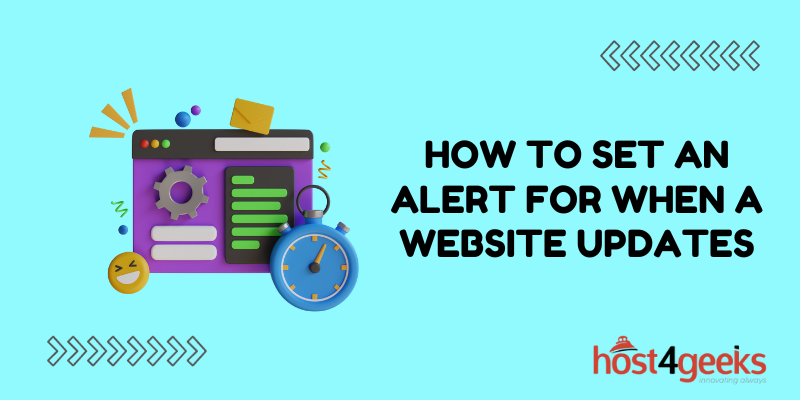Staying up-to-date with the latest changes on your favorite websites has never been easier, thanks to the power of alerts.
Whether you’re a tech enthusiast, a news junkie, or a business professional, having the ability to receive alerts whenever a website updates can be a game-changer. Imagine being the first to know about breaking news, product releases, or industry insights.
In this comprehensive guide, we’ll walk you through the steps to set up alerts for website updates, ensuring that you never miss out on valuable content again.
Understanding the Importance of Website Alerts
Before delving into the intricacies of setting up website alerts, let’s explore why they are so important. In today’s fast-paced world, information spreads rapidly.
Websites are constantly publishing new content, whether it’s news articles, blog posts, research findings, or product announcements. By setting up alerts for specific websites, you can:
Stay Ahead of the Curve
In a competitive landscape, being among the first to access fresh content gives you a competitive edge. Whether it’s about getting the latest stock market updates or being aware of trending fashion styles, alerts help you stay ahead of the curve.
Never Miss an Opportunity
Imagine you’re an investor and a company you’ve been eyeing releases a game-changing announcement. With website alerts, you can receive instant notifications and seize opportunities that could potentially yield significant returns.
Streamline Your Research
For researchers and academics, staying updated with the latest studies in your field is paramount. Alerts ensure that you’re always in the loop, allowing you to build upon the most recent findings.
Setting Up Website Alerts: A Step-by-Step Guide
Now that we understand the value of website alerts, let’s dive into the process of setting them up. We’ll guide you through the steps using a popular example: Google Alerts.
Step 1: Visit Google Alerts
Open your web browser and search for “Google Alerts.” Click on the official Google Alerts website link to access the platform.
Step 2: Sign in or Create an Account
If you have a Google account, sign in. If not, you’ll need to create one. This step is crucial as it allows you to manage and customize your alerts effectively.
Step 3: Enter Your Alert Query
In the search bar, enter the keywords related to the website or topic you want to receive alerts about. For instance, if you want to stay updated about technology trends, enter relevant keywords like “latest tech trends,” “technology news,” etc.
Step 4: Configure Alert Settings
Click on “Show options” to configure your alert settings. Here, you can choose the sources, frequency, language, region, and the number of results you want to receive.
Step 5: Choose the Delivery Method
Select how you want to receive your alerts. You can choose to have them delivered to your email or view them in your Google account’s notifications.
Step 6: Create Alert
Click on the “Create Alert” button to activate your alert. Google will now start monitoring the web for new content that matches your query.
Tips for Maximizing Alert Effectiveness
To ensure you get the most out of your website alerts, here are some valuable tips:
Be Specific with Keywords
To receive highly relevant alerts, use specific keywords. Generic terms might result in a flood of notifications that aren’t genuinely useful.
Utilize Boolean Operators
If your alert query is complex, consider using Boolean operators (AND, OR, NOT) to refine your search. This helps you tailor the alerts to your exact requirements.
Regularly Refine Your Alerts
Over time, your interests might evolve. Regularly review and refine your alerts to ensure you’re receiving content that aligns with your current needs.
Leverage Social Media Monitoring Tools
In addition to Google Alerts, explore social media monitoring tools like Hootsuite or Mention. These tools can provide real-time updates from various platforms.
Conclusion
In a world where information is power, setting up website alerts can elevate your knowledge and give you a competitive advantage. By staying on top of the latest updates in your areas of interest, you position yourself as an informed and proactive individual. Whether it’s for business, research, or personal enrichment, website alerts open doors to a world of opportunities.
Remember, the digital landscape is vast and ever-changing. By harnessing the power of website alerts, you take a significant step towards not only staying informed but also thriving in an information-driven era.

